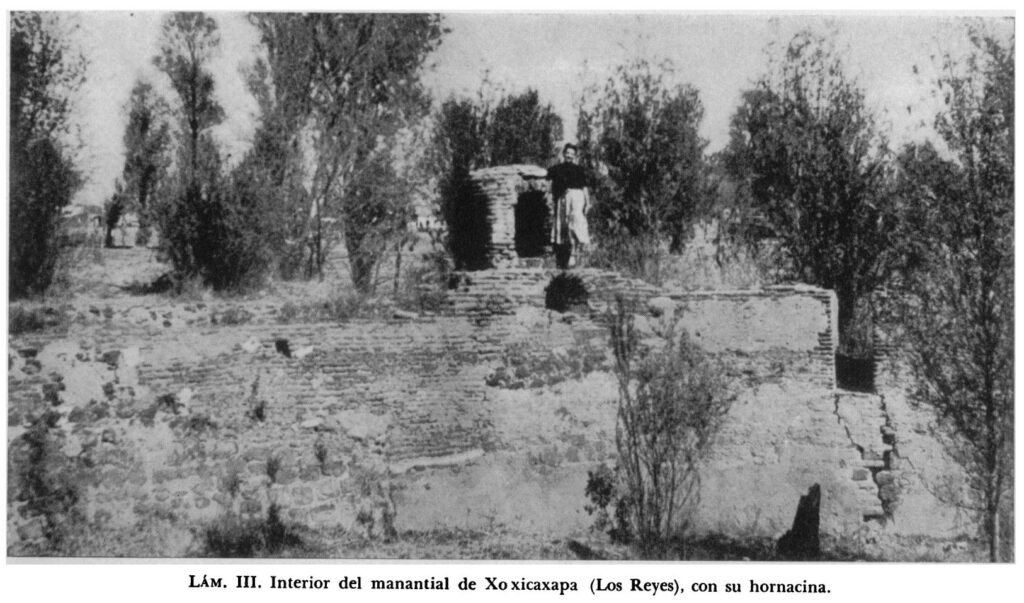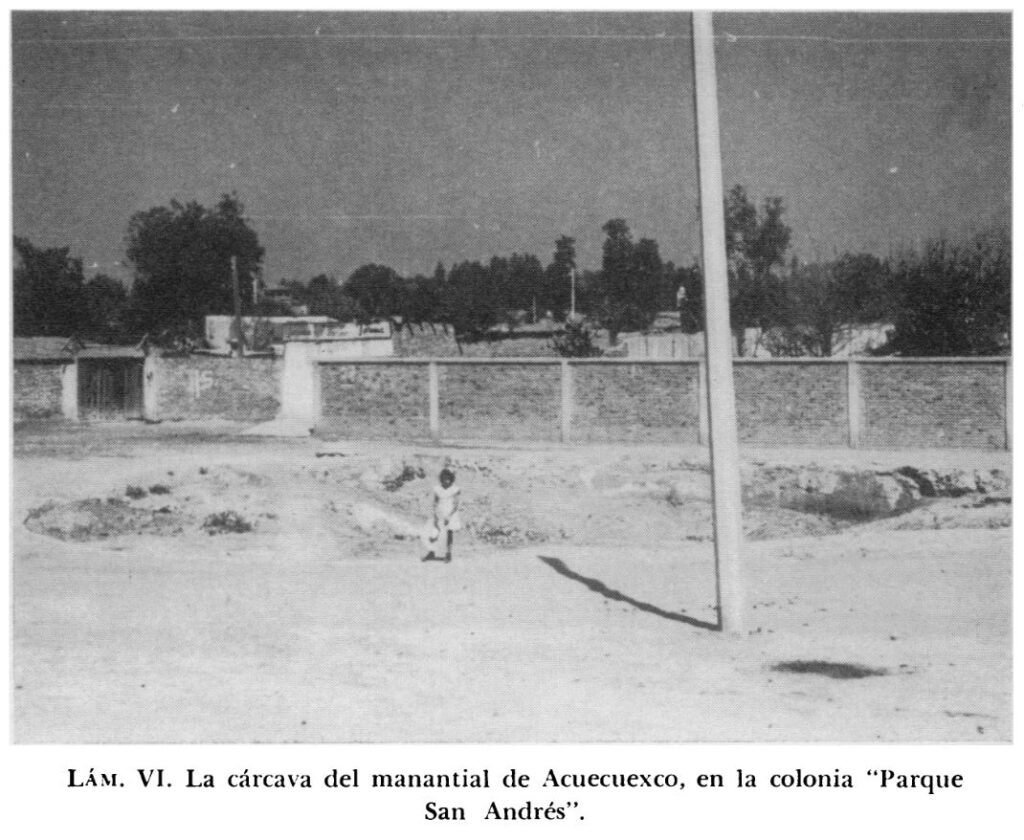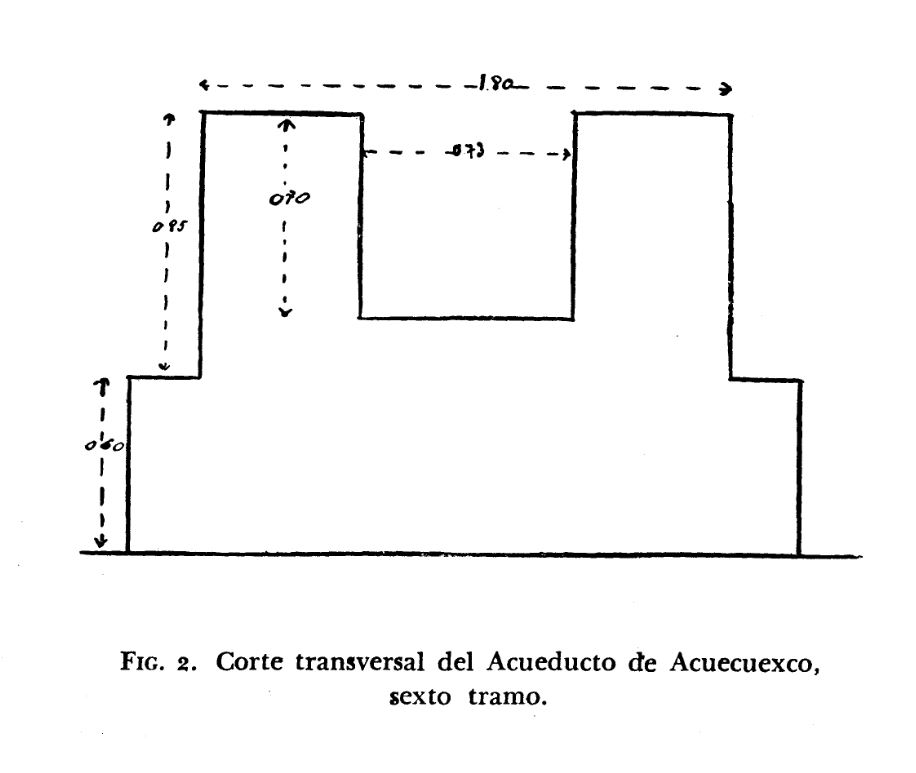In the Churubusco neighborhood of Coyoacan there were a number of springs that watered the indigenous communities there. Tenochtitlan’s Tlatoani Ahuitzotl, in a desire to feed his growing city, asked to use the water from Coyoacan, and the Acuecuexco spring, among others. Tzutzuman, ruler of Coyoacan, advised against an aqueduct into the city, that it might cause a flood, according to Duran. Whether it was unwanted advice or just the refusal to grant permission to the water, it’s not totally clear, but it seems Ahuitzotl had Tzutzuman killed.
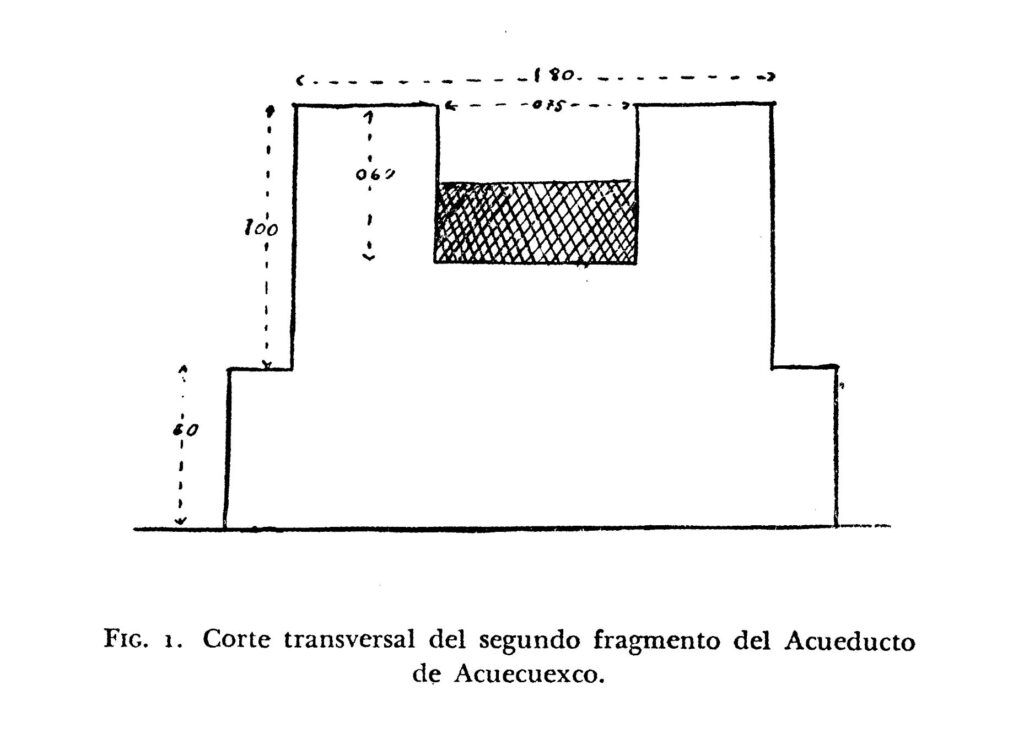
Once the political obstruction was removed all the communities of the Valley were asked to contribute to the new causeway. According to The Spring and the Aqueduct of Acuecuexco, by Cesar Lizardi Ramos, parts of the “indian” aqueduct were of a single raised channel made of tezontle stone and mortar, some of which Mr. Ramos mentions seeing in 1954. Finished in 1499, the Acuecuexco aqueduct came out of the Churubusco neighborhood, possibly sourced from several springs, but definitely from the Acuecuexco Spring. It then joined the Iztapalapa Causeway north, into Tenochtitlan.
The celebrations marking the opening of the aqueduct were well documented. Men dressed as Tlaloc and other gods danced as the water flowed into the city, splashing the water with their hands and feet as they moved. Musicians played, Children were sacrificed, forced to cry, their tears extracted for Tlaloc. By modern Western standards the celebration would have been appaling, in those sacrificial aspects, but otherwise beautiful. The celebration was designed to be a spiritual and physical extravaganza, unseen before.
Whether true or not, Tzutzuman’s advice proved wise and Tenochtitlan was flooded by the new channel, according to several sources. The effects of the flood range from the death of Ahuizotl himself, to a season of lost crops and flooding around the city. Whether from the flood or not, Ahuitzotl died shortly after. Tenochtitlan was repaired and rebuilt stronger.
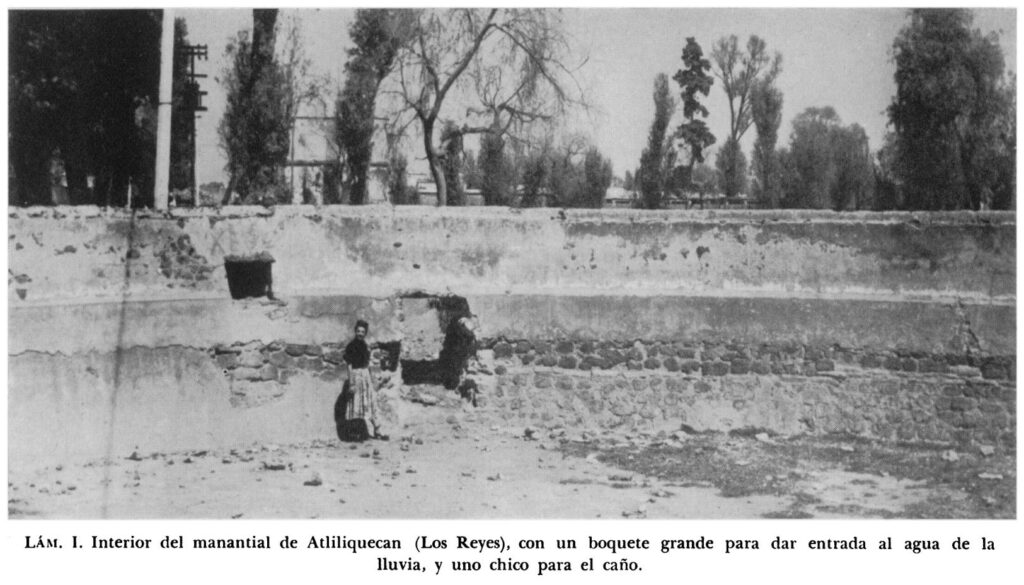
The Acuecuexco Aqueduct Monument was also commissioned to celebrate the completion of the aqueduct and Ahuitzotl’s rule. Today the stone sits in the National Museum of Anthropology in Mexico City. The monument was found near the route of the aqueduct in what would have been southern Tenochtitlan near the Xoloc Gate.
I didn’t find any narrative about the Acuecuexco Aqueduct during the Siege of Tenochtitlan but Cortes was camped along the Coyoacan-Ixtapalapa causeway for much of the siege, the aqueduct ran along it. I’d imagine Cortes was either using the aqueduct to supply his troops or had destroyed it, like the Chapultepec Aqueduct.
After the conquest the aqueduct was repurposed, the lake was diverted and dried by the friars and ranchers who came. Mr. Ramos, who walked the Churubusco neighborhood in 1954, couldn’t always tell which was colonial and which was indigenous. He mentions a ceramic two-channel pipe feeding the churches and ranchos, probably the colonial upgrade. Ramos noted in 1954 that the Acuecuexco Spring had been paved over, just a depression in the road. The other springs that fed the region were also paved over, or forgotten and filled with trash. A small statue at the corner of Plaza de la Conchita and Fernandez Leal possibly marks the location of the Los Camilos Spring, which was a notable source of water. Ramos describes the location of the various springs, but any of the streets have changed and landmarks disappeared.
Sources:
The Springs and Aqueduct of Acuecuexco, Cesar Lizardi Ramos, 1954
English Automated Google Translation
The Death of Aztec Tenochtitlan the Life of Mexico City, Barbara E. Mundy, 2015
